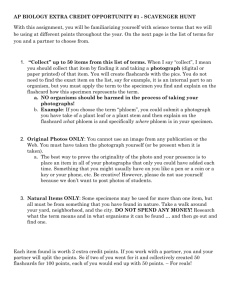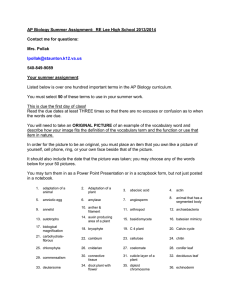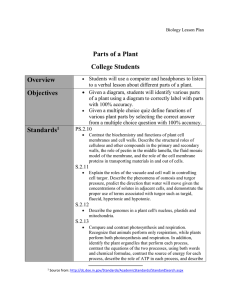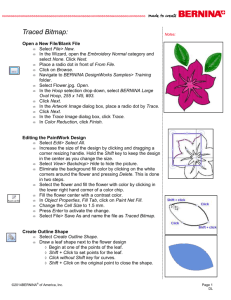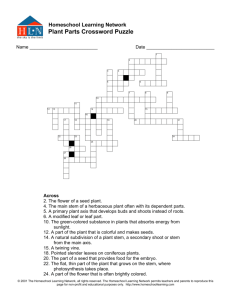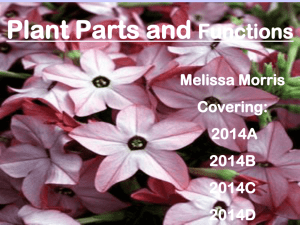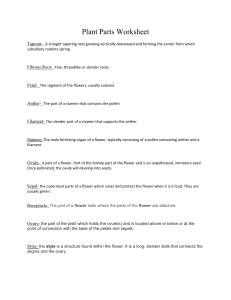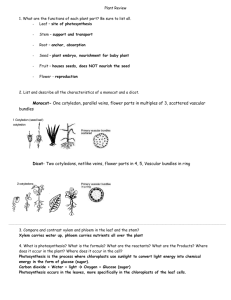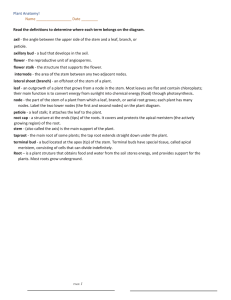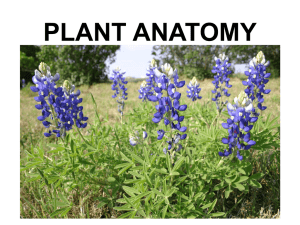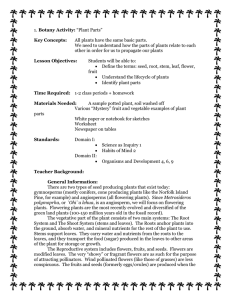Teaching guidance
advertisement
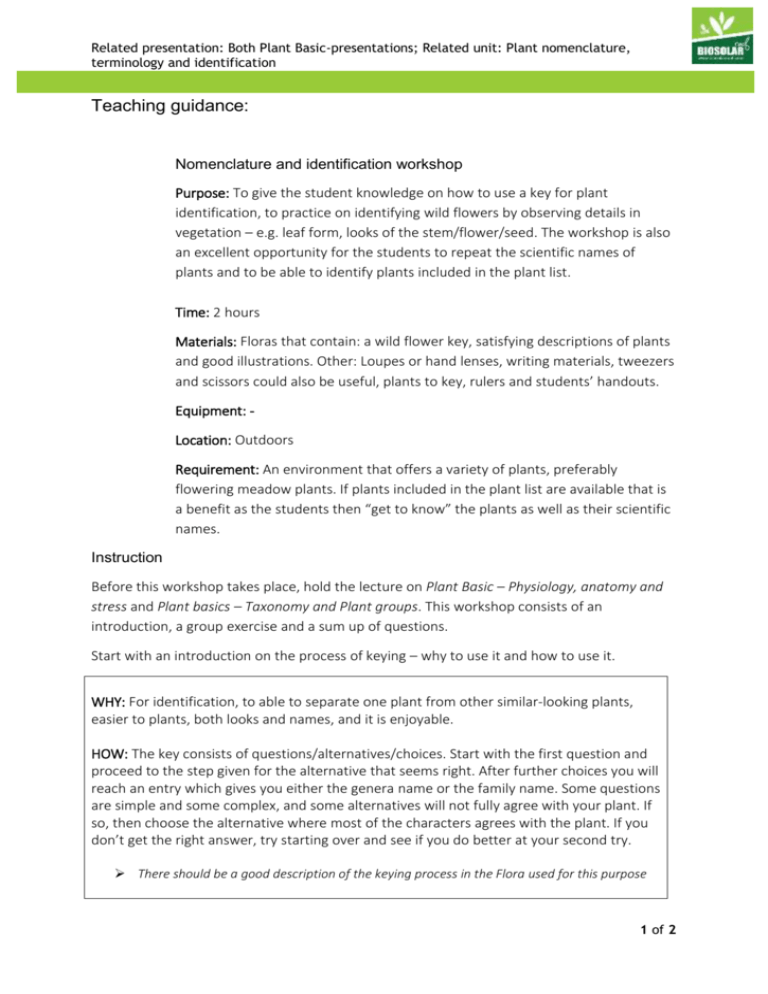
Related presentation: Both Plant Basic-presentations; Related unit: Plant nomenclature, terminology and identification Teaching guidance: Nomenclature and identification workshop Purpose: To give the student knowledge on how to use a key for plant identification, to practice on identifying wild flowers by observing details in vegetation – e.g. leaf form, looks of the stem/flower/seed. The workshop is also an excellent opportunity for the students to repeat the scientific names of plants and to be able to identify plants included in the plant list. Time: 2 hours Materials: Floras that contain: a wild flower key, satisfying descriptions of plants and good illustrations. Other: Loupes or hand lenses, writing materials, tweezers and scissors could also be useful, plants to key, rulers and students’ handouts. Equipment: Location: Outdoors Requirement: An environment that offers a variety of plants, preferably flowering meadow plants. If plants included in the plant list are available that is a benefit as the students then “get to know” the plants as well as their scientific names. Instruction Before this workshop takes place, hold the lecture on Plant Basic – Physiology, anatomy and stress and Plant basics – Taxonomy and Plant groups. This workshop consists of an introduction, a group exercise and a sum up of questions. Start with an introduction on the process of keying – why to use it and how to use it. WHY: For identification, to able to separate one plant from other similar-looking plants, easier to plants, both looks and names, and it is enjoyable. HOW: The key consists of questions/alternatives/choices. Start with the first question and proceed to the step given for the alternative that seems right. After further choices you will reach an entry which gives you either the genera name or the family name. Some questions are simple and some complex, and some alternatives will not fully agree with your plant. If so, then choose the alternative where most of the characters agrees with the plant. If you don’t get the right answer, try starting over and see if you do better at your second try. There should be a good description of the keying process in the Flora used for this purpose 1 of 2 Related presentation: Both Plant Basic-presentations; Related unit: Plant nomenclature, terminology and identification Key two or three species together with the whole class. Best is to start with plants that are known to many and that you recognize easily. Preferably a blooming plant. Why not start with plants included in the plant list? Discuss botanical parts of the plants and pay attention to details for example shape of leaf, shape of leaf edge, the stem – shape and length, the flower – petal number, colour, number of pistil and stamens etc. Let this introduction take its time, at least 45 minutes. You may take a 10 minutes break after the introduction. After the break, let the students work in groups consisting of 2-3 persons, keying as many plants as possible for about 30 minutes. Gather together when time is up and take another 20-30 minutes to discuss: Which plants were the students able to identify/not identify? Difficulties vs. simplicities? Similar plants? What families do the plants belong to? Characteristics? Does the scientific name give any clue on how the plant may look? 2 of 2


